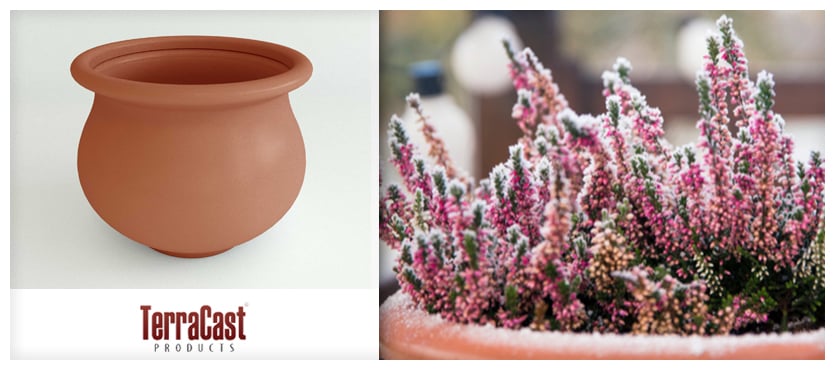Even though your potted plants live in a temperature-controlled environment, they are susceptible to life-threatening risks during the winter. Indoor plants, whether they are year-round potted plants or plants brought indoors over winter, can be affected by various factors, such as temperature fluctuations from daytime heat to evening chill, dry air, and short days that reduce the amount of light they receive. Here are some tips to keep your potted plants thriving during winter.
Adjust Your Watering Routine
Although it may seem counterintuitive, most indoor plants require less water during the winter. While winter air is drier, plants grow at a slower rate during the colder months; some even go completely dormant. As a result, plants require less water to stay hydrated, and overwatering can cause root rot. Keep in mind that different plants require different amounts of water—drought-tolerant cacti and other succulents may not require any watering at all, whereas some tropicals may require more frequent watering.
Selecting the Right Planter
Choosing the right planter can be difficult. Planters come in all sizes and shapes and are made with different materials. Depending on the weather, some materials will perform better than others. TerraCast resin planters are made of linear low-density polyethylene and are durable and long-lasting. They can withstand harsh winter conditions. They provide the best containers to protect your plant year after year looking good and performing well
Clean Their Leaves
Potted plants often accumulate a thick layer of household dust on their leaves, especially in winter. This reduces the amount of light that can reach the leaf surface, making it more difficult for them to produce food. Wipe off dust with a damp cloth regularly, or rinse the plant in a lukewarm shower for five minutes. Leaf-cleaning products are available, but only for certain plants.
Check for Pests
Over the winter, a nice warm house provides the ideal environment for many plant pests such as aphids and insects to thrive and breed. Inspect all of your plants for pests now, looking under the leaves as well as on top. Check plants that have spent the summer in the garden carefully to avoid bringing in new pests. If you find any pests, remove them. Throughout the winter, continue to inspect your plants regularly.
Choose the Right Location
The placement of your planters can help keep your plants survive throughout the winter. Choosing a location on the northern or eastern side of your home will help plants avoid the temperature fluctuations that come with southern-facing positions. Because the freeze cycle can harm roots, you should place your planters on soil rather than pavement, or concrete. The soil beneath the planters will help keep the temperatures stable, as opposed to planters placed on the pavement, where temperatures tend to fluctuate more when the days are sunny and the nights are cold.
Increase Humidity
During winter, plants require 40-50% humidity. Homes offer only 5-10%. Many indoor plants are tropical and therefore prefer higher humidity levels. Humidifiers are an option, but a less expensive and more decorative humidity tray can be bought or made. Fill a tray with pebbles with water, then place the plant on top of the rocks. The moisture will evaporate up and around the plant, increasing its humidity than the rest of the room.
Choose TerraCast Products
Choosing the right planter is crucial in ensuring you take care of plants. When selecting a planter for the winter season, bigger is always better. A large container with enough volume will have enough soil to protect your plant and insulate the roots during the winter. At TerraCast we have planters that will keep your plants thriving through winter. For business owners with thousands of dollars worth of potted plants and trees, this can save you from a huge financial burden. For more information, get in touch with TerraCast Products today!

